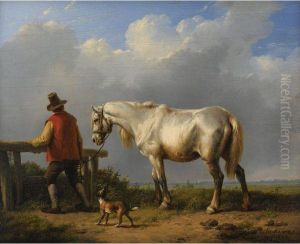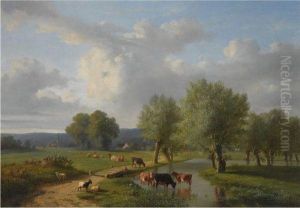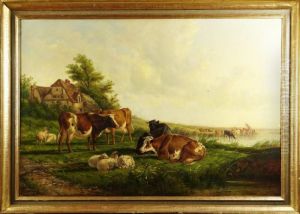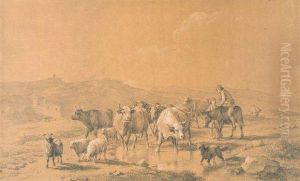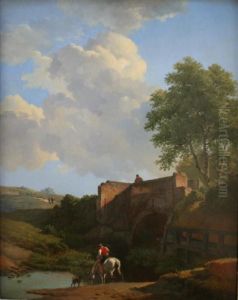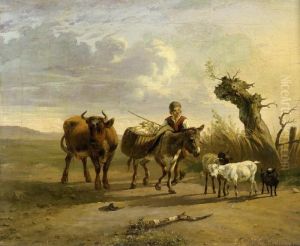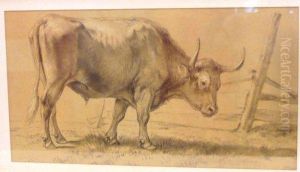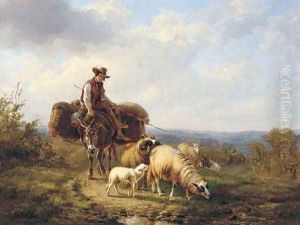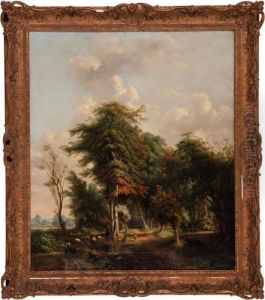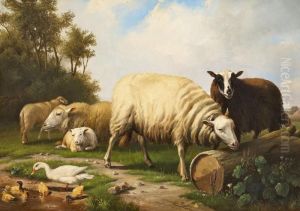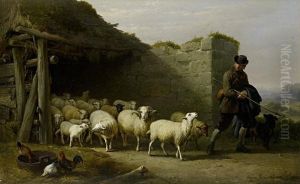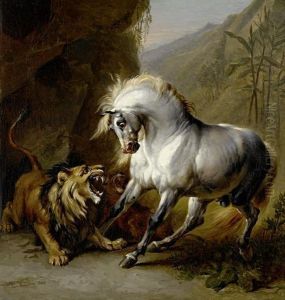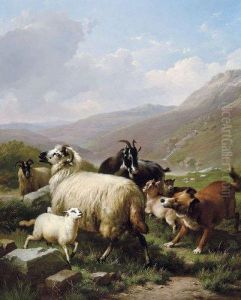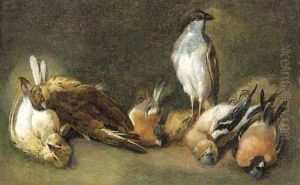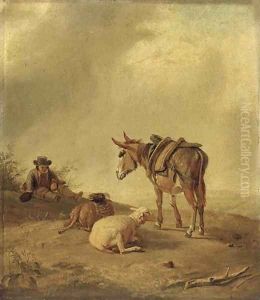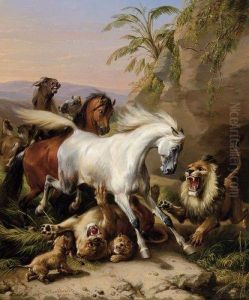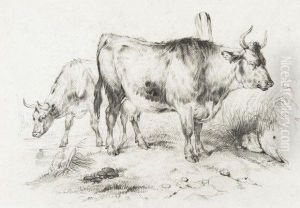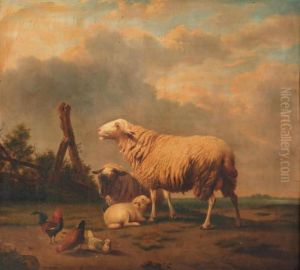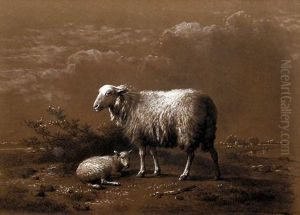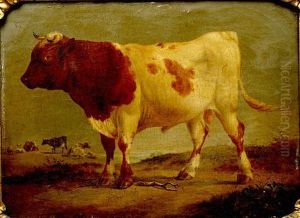Eugene Joseph Verboeckhoven Paintings
Eugène Joseph Verboeckhoven was a Belgian painter and sculptor, born in Warneton, Belgium, in 1798. He was renowned for his detailed and realistic depictions of animals, landscapes, and pastoral scenes. His work reflects a deep appreciation for nature and an exceptional ability to capture the essence and beauty of rural life. Verboeckhoven's skill in rendering the textures of fur and feather, as well as his adept use of light and shadow, made his paintings highly sought after by collectors and art lovers during the 19th century.
Eugène Joseph Verboeckhoven was part of a family of artists; his father, Barthélemy Verboeckhoven, was a sculptor, and his brothers were also involved in the arts. This environment nurtured his talents from a young age. He received his initial artistic training from his father and then furthered his education by studying the works of old masters in Paris. His time in Paris was pivotal; it exposed him to the thriving art scene of the early 19th century and allowed him to develop his own style, which combined elements of Romanticism with meticulous realism.
Throughout his career, Verboeckhoven collaborated with many prominent landscape painters of his time, adding animals to their compositions. This collaborative work enhanced his reputation and demonstrated his versatility and skill in integrating his subjects into various backdrops. His works were exhibited widely across Europe, including in Paris, London, and Brussels, earning him numerous medals and accolades. Verboeckhoven also served as a professor at the Ghent Academy, where he influenced a generation of artists with his teachings on animal anatomy and painting techniques.
Verboeckhoven was not just celebrated for his art; he was also recognized for his contributions to the development of the Belgian art scene in the 19th century. His commitment to art education and his role in various artistic societies helped elevate the status of Belgian artists and contributed to the flourishing of the arts in Belgium.
Eugène Joseph Verboeckhoven passed away in Schaerbeek, Belgium, in 1881. His legacy endures through his masterful works, which continue to be admired for their technical excellence and their portrayal of serene and idyllic landscapes. His paintings are preserved in numerous prestigious museums and private collections around the world, serving as a testament to his enduring influence and mastery of animal painting.
